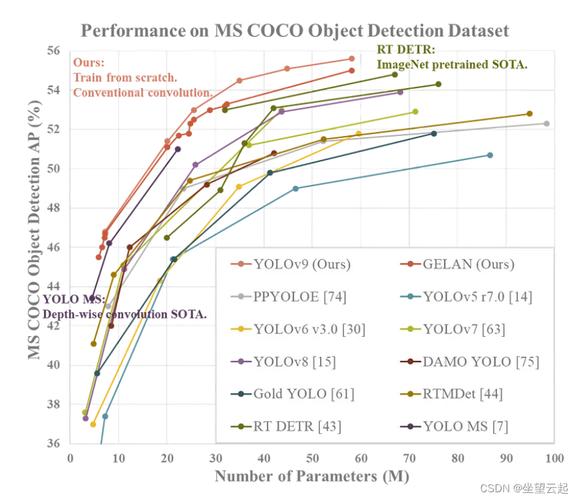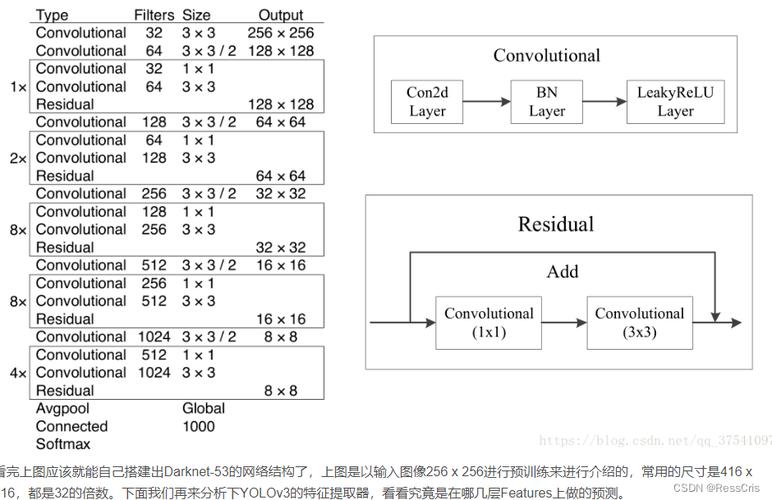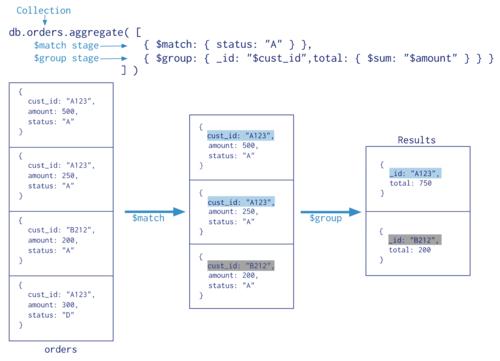一、环境配置

1) 选择Github - ultralytics/yolov3 at v9.6.0
2)训练自己的数据集、评估数据集、推理数据集

2.配置量化过程
1)下载Vitis-ai3.0 版本。
2)将自己YOLOV3推理所需要的代码移动到Vitis-AI-3.0\examples\vai_quantizer\pytorch内
3 配置VSCODE+WSL+Ubuntu(Windows11/10子系统)
实现VSCODE操纵ubuntu
4.量化准备
1)从vscode 内采用快捷键(Ctrl+~)进入命令界面
2)sudo -i 进入root权限
3)cd 进入Vitis-AI-3.0\examples\vai_quantizer\pytorch内
4)拉取docker-hub:https://hub.docker.com/search?q=vitis-ai
5) 然后conda activate pytorch
5.量化代码:
import argparse
import os
import shutil
import time
import torch
import torch.nn as nn
import torch.optim
import torchvision.datasets as datasets
import torchvision.transforms as transforms
from pytorch_nndct import nn as nndct_nn
from pytorch_nndct.nn.modules import functional
from pytorch_nndct import QatProcessor
parser = argparse.ArgumentParser()
parser.add_argument(
'--data_dir',
default='/group/dataset/imagenet/pytorch',
help='Data set directory.')
parser.add_argument(
'--pretrained',
default='/group/modelzoo/torch_models/resnet18-5c106cde.pth',
help='Pre-trained model file path.')
parser.add_argument(
'--workers',
default=4,
type=int,
help='Number of data loading workers to be used.')
parser.add_argument('--epochs', default=3, type=int, help='Training epochs.')
parser.add_argument(
'--quantizer_lr',
default=1e-2,
type=float,
help='Initial learning rate of quantizer.')
parser.add_argument(
'--quantizer_lr_decay',
default=0.5,
type=int,
help='Learning rate decay ratio of quantizer.')
parser.add_argument(
'--weight_lr',
default=1e-5,
type=float,
help='Initial learning rate of network weights.')
parser.add_argument(
'--weight_lr_decay',
default=0.94,
type=int,
help='Learning rate decay ratio of network weights.')
parser.add_argument(
'--train_batch_size', default=24, type=int, help='Batch size for training.')
parser.add_argument(
'--val_batch_size',
default=100,
type=int,
help='Batch size for validation.')
parser.add_argument(
'--weight_decay', default=1e-4, type=float, help='Weight decay.')
parser.add_argument(
'--display_freq',
default=100,
type=int,
help='Display training metrics every n steps.')
parser.add_argument(
'--val_freq', default=1000, type=int, help='Validate model every n steps.')
parser.add_argument(
'--quantizer_norm',
default=True,
type=bool,
help='Use normlization for quantizer.')
parser.add_argument(
'--mode',
default='train',
choices=['train', 'deploy'],
help='Running mode.')
parser.add_argument(
'--save_dir',
default='./qat_models',
help='Directory to save trained models.')
parser.add_argument(
'--output_dir', default='qat_result', help='Directory to save qat result.')
args, _ = parser.parse_known_args()
def conv3x3(in_planes, out_planes, stride=1, groups=1, dilation=1):
"""3x3 convolution with padding"""
return nn.Conv2d(
in_planes,
out_planes,
kernel_size=3,
stride=stride,
padding=dilation,
groups=groups,
bias=False,
dilation=dilation)
def conv1x1(in_planes, out_planes, stride=1):
"""1x1 convolution"""
return nn.Conv2d(
in_planes, out_planes, kernel_size=1, stride=stride, bias=False)
class BasicBlock(nn.Module):
expansion = 1
def __init__(self,
inplanes,
planes,
stride=1,
downsample=None,
groups=1,
base_width=64,
dilation=1,
norm_layer=None):
super(BasicBlock, self).__init__()
if norm_layer is None:
norm_layer = nn.BatchNorm2d
if groups != 1 or base_width != 64:
raise ValueError('BasicBlock only supports groups=1 and base_width=64')
if dilation > 1:
raise NotImplementedError("Dilation > 1 not supported in BasicBlock")
# Both self.conv1 and self.downsample layers downsample the input when stride != 1
self.conv1 = conv3x3(inplanes, planes, stride)
self.bn1 = norm_layer(planes)
self.relu1 = nn.ReLU(inplace=True)
self.conv2 = conv3x3(planes, planes)
self.bn2 = norm_layer(planes)
self.downsample = downsample
self.stride = stride
self.skip_add = functional.Add()
self.relu2 = nn.ReLU(inplace=True)
def forward(self, x):
idEntity = x
out = self.conv1(x)
out = self.bn1(out)
out = self.relu1(out)
out = self.conv2(out)
out = self.bn2(out)
if self.downsample is not None:
identity = self.downsample(x)
out = self.skip_add(out, identity)
out = self.relu2(out)
return out
class Bottleneck(nn.Module):
expansion = 4
def __init__(self,
inplanes,
planes,
stride=1,
downsample=None,
groups=1,
base_width=64,
dilation=1,
norm_layer=None):
super(Bottleneck, self).__init__()
if norm_layer is None:
norm_layer = nn.BatchNorm2d
width = int(planes * (base_width / 64.)) * groups
# Both self.conv2 and self.downsample layers downsample the input when stride != 1
self.conv1 = conv1x1(inplanes, width)
self.bn1 = norm_layer(width)
self.conv2 = conv3x3(width, width, stride, groups, dilation)
self.bn2 = norm_layer(width)
self.conv3 = conv1x1(width, planes * self.expansion)
self.bn3 = norm_layer(planes * self.expansion)
self.relu1 = nn.ReLU(inplace=True)
self.downsample = downsample
self.stride = stride
self.skip_add = functional.Add()
self.relu2 = nn.ReLU(inplace=True)
self.relu3 = nn.ReLU(inplace=True)
def forward(self, x):
identity = x
out = self.conv1(x)
out = self.bn1(out)
out = self.relu1(out)
out = self.conv2(out)
out = self.bn2(out)
out = self.relu2(out)
out = self.conv3(out)
out = self.bn3(out)
if self.downsample is not None:
identity = self.downsample(x)
# The original code was:
# out += identity
# Replace '+=' with Add module cause we want to quantize add op.
out = self.skip_add(out, identity)
out = self.relu3(out)
return out
class ResNet(nn.Module):
def __init__(self,
block,
layers,
num_classes=1000,
zero_init_residual=False,
groups=1,
width_per_group=64,
replace_stride_with_dilation=None,
norm_layer=None):
super(ResNet, self).__init__()
if norm_layer is None:
norm_layer = nn.BatchNorm2d
self._norm_layer = norm_layer
self.inplanes = 64
self.dilation = 1
if replace_stride_with_dilation is None:
# each element in the tuple indicates if we should replace
# the 2x2 stride with a dilated convolution instead
replace_stride_with_dilation = [False, False, False]
if len(replace_stride_with_dilation) != 3:
raise ValueError(
"replace_stride_with_dilation should be None "
"or a 3-element tuple, got {}".format(replace_stride_with_dilation))
self.groups = groups
self.base_width = width_per_group
self.conv1 = nn.Conv2d(
3, self.inplanes, kernel_size=7, stride=2, padding=3, bias=False)
self.bn1 = norm_layer(self.inplanes)
self.relu = nn.ReLU(inplace=True)
self.maxpool = nn.MaxPool2d(kernel_size=3, stride=2, padding=1)
self.layer1 = self._make_layer(block, 64, layers[0])
self.layer2 = self._make_layer(
block, 128, layers[1], stride=2, dilate=replace_stride_with_dilation[0])
self.layer3 = self._make_layer(
block, 256, layers[2], stride=2, dilate=replace_stride_with_dilation[1])
self.layer4 = self._make_layer(
block, 512, layers[3], stride=2, dilate=replace_stride_with_dilation[2])
self.avgpool = nn.AdaptiveAvgPool2d((1, 1))
self.fc = nn.Linear(512 * block.expansion, num_classes)
self.quant_stub = nndct_nn.QuantStub()
self.dequant_stub = nndct_nn.DeQuantStub()
for m in self.modules():
if isinstance(m, nn.Conv2d):
nn.init.kaiming_normal_(m.weight, mode='fan_out', nonlinearity='relu')
elif isinstance(m, (nn.BatchNorm2d, nn.GroupNorm)):
nn.init.constant_(m.weight, 1)
nn.init.constant_(m.bias, 0)
# Zero-initialize the last BN in each residual branch,
# so that the residual branch starts with zeros, and each residual block behaves like an identity.
# This improves the model by 0.2~0.3% according to https://arxiv.org/abs/1706.02677
if zero_init_residual:
for m in self.modules():
if isinstance(m, Bottleneck):
nn.init.constant_(m.bn3.weight, 0)
elif isinstance(m, BasicBlock):
nn.init.constant_(m.bn2.weight, 0)
def _make_layer(self, block, planes, blocks, stride=1, dilate=False):
norm_layer = self._norm_layer
downsample = None
previous_dilation = self.dilation
if dilate:
self.dilation *= stride
stride = 1
if stride != 1 or self.inplanes != planes * block.expansion:
downsample = nn.Sequential(
conv1x1(self.inplanes, planes * block.expansion, stride),
norm_layer(planes * block.expansion),
)
layers = []
layers.append(
block(self.inplanes, planes, stride, downsample, self.groups,
self.base_width, previous_dilation, norm_layer))
self.inplanes = planes * block.expansion
for _ in range(1, blocks):
layers.append(
block(
self.inplanes,
planes,
groups=self.groups,
base_width=self.base_width,
dilation=self.dilation,
norm_layer=norm_layer))
return nn.Sequential(*layers)
def forward(self, x):
x = self.quant_stub(x)
x = self.conv1(x)
x = self.bn1(x)
x = self.relu(x)
x = self.maxpool(x)
x = self.layer1(x)
x = self.layer2(x)
x = self.layer3(x)
x = self.layer4(x)
x = self.avgpool(x)
x = torch.flatten(x, 1)
x = self.fc(x)
x = self.dequant_stub(x)
return x
def _resnet(arch, block, layers, pretrained, progress, **kwargs):
model = ResNet(block, layers, **kwargs)
if pretrained:
model.load_state_dict(torch.load(args.pretrained))
return model
def resnet18(pretrained=False, progress=True, **kwargs):
r"""ResNet-18 model from
`"Deep Residual Learning for Image Recognition" '_
Args:
pretrained (bool): If True, returns a model pre-trained on ImageNet
progress (bool): If True, displays a progress bar of the download to stderr
"""
return _resnet('resnet18', BasicBlock, [2, 2, 2, 2], pretrained, progress,
**kwargs)
def train_one_step(model, inputs, criterion, optimizer, step, gpu=None):
# switch to train mode
model.train()
images, target = inputs
if gpu is not None:
model = model.cuda(gpu)
images = images.cuda(gpu, non_blocking=True)
target = target.cuda(gpu, non_blocking=True)
# compute output
output = model(images)
loss = criterion(output, target)
l2_decay = 1e-4
l2_norm = 0.0
for param in model.quantizer_parameters():
l2_norm += torch.pow(param, 2.0)[0]
if args.quantizer_norm:
loss += l2_decay * torch.sqrt(l2_norm)
# measure accuracy and record loss
acc1, acc5 = accuracy(output, target, topk=(1, 5))
# compute gradient and do SGD step
optimizer.zero_grad()
loss.backward()
optimizer.step()
return loss, acc1, acc5
def validate(val_loader, model, criterion, gpu):
batch_time = AverageMeter('Time', ':6.3f')
losses = AverageMeter('Loss', ':.4e')
top1 = AverageMeter('Acc@1', ':6.2f')
top5 = AverageMeter('Acc@5', ':6.2f')
progress = ProgressMeter(
len(val_loader), [batch_time, losses, top1, top5], prefix='Test: ')
# switch to evaluate mode
model.eval()
with torch.no_grad():
end = time.time()
for i, (images, target) in enumerate(val_loader):
if gpu is not None:
model = model.cuda(gpu)
images = images.cuda(gpu, non_blocking=True)
target = target.cuda(gpu, non_blocking=True)
# compute output
output = model(images)
loss = criterion(output, target)
# measure accuracy and record loss
acc1, acc5 = accuracy(output, target, topk=(1, 5))
losses.update(loss.item(), images.size(0))
top1.update(acc1[0], images.size(0))
top5.update(acc5[0], images.size(0))
# measure elapsed time
batch_time.update(time.time() - end)
end = time.time()
if i % 50 == 0:
progress.display(i)
# TODO: this should also be done with the ProgressMeter
print(' * Acc@1 {top1.avg:.3f} Acc@5 {top5.avg:.3f}'.format(
top1=top1, top5=top5))
return top1.avg
def mkdir_if_not_exist(x):
if not x or os.path.isdir(x):
return
os.mkdir(x)
if not os.path.isdir(x):
raise RuntimeError("Failed to create dir %r" % x)
def save_checkpoint(state, is_best, directory):
mkdir_if_not_exist(directory)
filepath = os.path.join(directory, 'model.pth')
torch.save(state, filepath)
if is_best:
best_acc1 = state['best_acc1'].item()
best_filepath = os.path.join(directory, 'model_best_%5.3f.pth' % best_acc1)
shutil.copyfile(filepath, best_filepath)
print('Saving best ckpt to {}, acc1: {}'.format(best_filepath, best_acc1))
class AverageMeter(object):
"""Computes and stores the average and current value"""
def __init__(self, name, fmt=':f'):
self.name = name
self.fmt = fmt
self.reset()
def reset(self):
self.val = 0
self.avg = 0
self.sum = 0
self.count = 0
def update(self, val, n=1):
self.val = val
self.sum += val * n
self.count += n
self.avg = self.sum / self.count
def __str__(self):
fmtstr = '{name} {val' + self.fmt + '} ({avg' + self.fmt + '})'
return fmtstr.format(**self.__dict__)
class ProgressMeter(object):
def __init__(self, num_batches, meters, prefix=""):
self.batch_fmtstr = self._get_batch_fmtstr(num_batches)
self.meters = meters
self.prefix = prefix
def display(self, batch):
entries = [self.prefix + self.batch_fmtstr.format(batch)]
entries += [str(meter) for meter in self.meters]
print('\t'.join(entries))
def _get_batch_fmtstr(self, num_batches):
num_digits = len(str(num_batches // 1))
fmt = '{:' + str(num_digits) + 'd}'
return '[' + fmt + '/' + fmt.format(num_batches) + ']'
def adjust_learning_rate(optimizer, epoch, step):
"""Sets the learning rate to the initial LR decayed by decay ratios"""
weight_lr_decay_steps = 3000 * (24 / args.train_batch_size)
quantizer_lr_decay_steps = 1000 * (24 / args.train_batch_size)
for param_group in optimizer.param_groups:
group_name = param_group['name']
if group_name == 'weight' and step % weight_lr_decay_steps == 0:
lr = args.weight_lr * (
args.weight_lr_decay**(step / weight_lr_decay_steps))
param_group['lr'] = lr
print('Adjust lr at epoch {}, step {}: group_name={}, lr={}'.format(
epoch, step, group_name, lr))
if group_name == 'quantizer' and step % quantizer_lr_decay_steps == 0:
lr = args.quantizer_lr * (
args.quantizer_lr_decay**(step / quantizer_lr_decay_steps))
param_group['lr'] = lr
print('Adjust lr at epoch {}, step {}: group_name={}, lr={}'.format(
epoch, step, group_name, lr))
def accuracy(output, target, topk=(1,)):
"""Computes the accuracy over the k top predictions for the specified values of k"""
with torch.no_grad():
maxk = max(topk)
batch_size = target.size(0)
_, pred = output.topk(maxk, 1, True, True)
pred = pred.t()
correct = pred.eq(target.view(1, -1).expand_as(pred))
res = []
for k in topk:
correct_k = correct[:k].flatten().float().sum(0, keepdim=True)
res.append(correct_k.mul_(100.0 / batch_size))
return res
def train(model, train_loader, val_loader, criterion, gpu):
best_acc1 = 0
num_train_batches_per_epoch = int(len(train_loader) / args.train_batch_size)
batch_time = AverageMeter('Time', ':6.3f')
data_time = AverageMeter('Data', ':6.3f')
losses = AverageMeter('Loss', ':.4e')
top1 = AverageMeter('Acc@1', ':6.2f')
top5 = AverageMeter('Acc@5', ':6.2f')
param_groups = [{
'params': model.quantizer_parameters(),
'lr': args.quantizer_lr,
'name': 'quantizer'
}, {
'params': model.non_quantizer_parameters(),
'lr': args.weight_lr,
'name': 'weight'
}]
optimizer = torch.optim.Adam(
param_groups, args.weight_lr, weight_decay=args.weight_decay)
for epoch in range(args.epochs):
progress = ProgressMeter(
len(train_loader) * args.epochs,
[batch_time, data_time, losses, top1, top5],
prefix="Epoch[{}], Step: ".format(epoch))
for i, (images, target) in enumerate(train_loader):
end = time.time()
# measure data loading time
data_time.update(time.time() - end)
step = len(train_loader) * epoch + i
adjust_learning_rate(optimizer, epoch, step)
loss, acc1, acc5 = train_one_step(model, (images, target), criterion,
optimizer, step, gpu)
# measure elapsed time
batch_time.update(time.time() - end)
end = time.time()
losses.update(loss.item(), images.size(0))
top1.update(acc1[0], images.size(0))
top5.update(acc5[0], images.size(0))
if step % args.display_freq == 0:
progress.display(step)
if step % args.val_freq == 0:
# evaluate on validation set
acc1 = validate(val_loader, model, criterion, gpu)
# remember best acc@1 and save checkpoint
is_best = acc1 > best_acc1
best_acc1 = max(acc1, best_acc1)
save_checkpoint(
{
'epoch': epoch + 1,
'state_dict': model.state_dict(),
'best_acc1': best_acc1
}, is_best, args.save_dir)
def main():
print('Used arguments:', args)
traindir = os.path.join(args.data_dir, 'train')
valdir = os.path.join(args.data_dir, 'validation')
normalize = transforms.Normalize(
mean=[0.485, 0.456, 0.406], std=[0.229, 0.224, 0.225])
train_dataset = datasets.ImageFolder(
traindir,
transforms.Compose([
transforms.RandomResizedCrop(224),
transforms.RandomHorizontalFlip(),
transforms.ToTensor(),
normalize,
]))
train_loader = torch.utils.data.DataLoader(
train_dataset,
batch_size=args.train_batch_size,
shuffle=True,
num_workers=args.workers,
pin_memory=True)
val_dataset = datasets.ImageFolder(
valdir,
transforms.Compose([
transforms.Resize(256),
transforms.CenterCrop(224),
transforms.ToTensor(),
normalize,
]))
val_loader = torch.utils.data.DataLoader(
val_dataset,
batch_size=args.val_batch_size,
shuffle=False,
num_workers=args.workers,
pin_memory=True)
model = resnet18(pretrained=True)
# define loss function (criterion) and optimizer
criterion = nn.CrossEntropyLoss()
gpu = 0
inputs = torch.randn([args.train_batch_size, 3, 224, 224],
dtype=torch.float32).cuda(gpu)
qat_processor = QatProcessor(
model, inputs, bitwidth=8, device=torch.device('cuda:{}'.format(gpu)))
if args.mode == 'train':
# Step 1: Get quantized model and train it.
quantized_model = qat_processor.trainable_model()
criterion = criterion.cuda(gpu)
train(quantized_model, train_loader, val_loader, criterion, gpu)
# Step 2: Get deployable model and test it.
# There may be some slight differences in accuracy with the quantized model.
deployable_model = qat_processor.to_deployable(quantized_model,
args.output_dir)
validate(val_loader, deployable_model, criterion, gpu)
elif args.mode == 'deploy':
# Step 3: Export xmodel from deployable model.
deployable_model = qat_processor.deployable_model(
args.output_dir, used_for_xmodel=True)
val_subset = torch.utils.data.Subset(val_dataset, list(range(1)))
subset_loader = torch.utils.data.DataLoader(
val_subset,
batch_size=1,
shuffle=False,
num_workers=args.workers,
pin_memory=True)
# Must forward deployable model at least 1 iteration with batch_size=1
for images, _ in subset_loader:
deployable_model(images)
qat_processor.export_xmodel(args.output_dir)
else:
raise ValueError('mode must be one of ["train", "deploy"]')
if __name__ == '__main__':
main()
参照resnet18.py直接调用模型,首先执行









